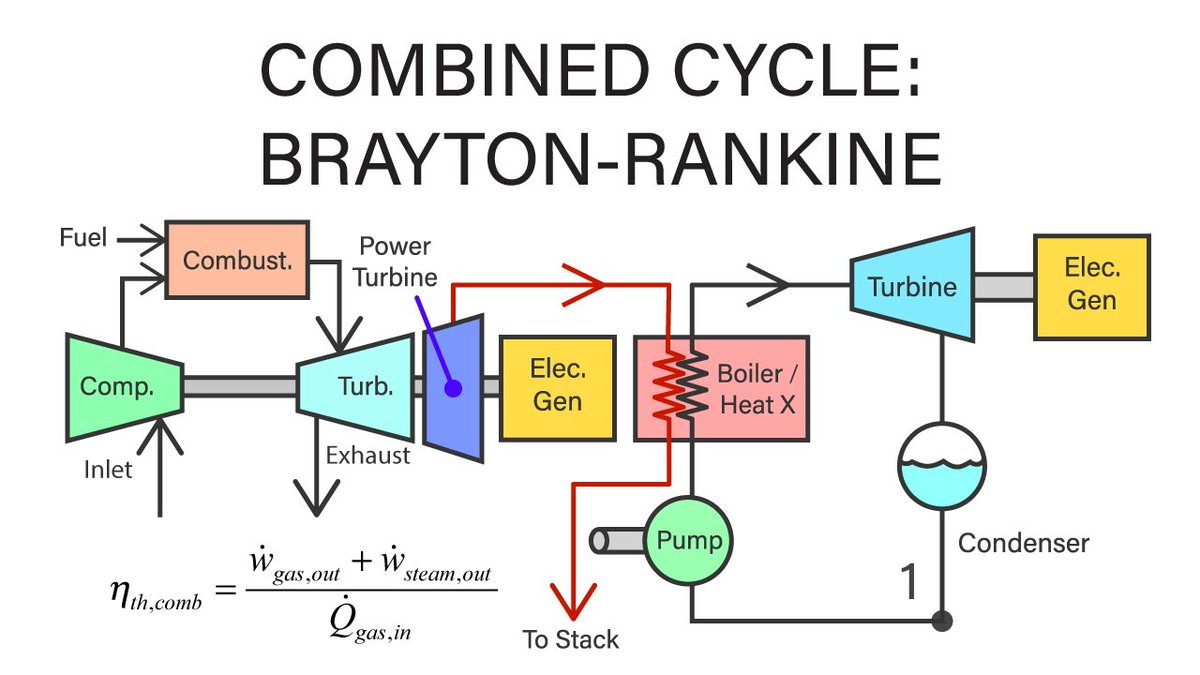#Backtoschool
Let's talk about fundamentals of #FusionEnergy: plasma energy balance and Lawson criterion
Let's talk about fundamentals of #FusionEnergy: plasma energy balance and Lawson criterion
Plasma energy balance is determined by the energy sources feeding the plasma and the energy losses cooling it down
For the plasma to remain stationary, the energy balance must be in equilibrium, i.e. the sources must compensate the losses
For the plasma to remain stationary, the energy balance must be in equilibrium, i.e. the sources must compensate the losses
The total power produced by the D-T fusion reaction Pfusion is divided between the products of the reaction, the alpha particles, i.e. the helium nuclei (He), and the neutrons 

The neutrons take away about 80% of the energy, while the heavier alpha particles, keep about 20%
Palpha : the main source of the plasma energy comes from the alpha particles
They are confined by the tokamak magnetic field, and give energy to plasma by collision
They are confined by the tokamak magnetic field, and give energy to plasma by collision
Pneut: neutrons are not sensitive to the magnetic field, since they have no charge, and thus escape quickly, without having time to give their energy to the plasma
They are stopped by the materials in the components surrounding the tokamak vacuum chamber
They are stopped by the materials in the components surrounding the tokamak vacuum chamber

If the energy from the fusion reactions is not sufficient to compensate losses, it is necessary to supply energy from the outside to maintain the plasma using an additional heating system
This is the external power Pexternal
This is the external power Pexternal
Plasma confinement by the magnetic field is not perfect: particles and heat diffuse from the plasma center towards the outside
The losses connected to this particles and heat transport are considerable
Plasma also cools by radiation according to different processes
The losses connected to this particles and heat transport are considerable
Plasma also cools by radiation according to different processes
The result of all these terms gives the total power lost by the plasma Plosses
The temporal variation of the plasma energy W may thus be written:

The temporal variation of the plasma energy W may thus be written:


only the alpha particles give their energy to the plasma, the rest of the fusion power is dissipated into the components surrounding the plasma
So possible balance scenarios are:
So possible balance scenarios are:

The energy confinement time tE
is the characteristic time of decrease in plasma energy; in other words, it is the time taken by the plasma to empty itself of its energy content if the sources supplying it are abruptly cut off
is the characteristic time of decrease in plasma energy; in other words, it is the time taken by the plasma to empty itself of its energy content if the sources supplying it are abruptly cut off

this time has nothing to do with the pulse duration, which is determined by the capacities of the machine magnetic system or plasma instabilities
The amplification factor Q
This is the ratio between the power from fusion reactions and the external power supplied to the plasma by the heating systems
This is the ratio between the power from fusion reactions and the external power supplied to the plasma by the heating systems
This figure thus qualifies the plasma’s energy balance. If it is higher than 1, more energy has been produced with fusion reactions than was necessary to supply to maintain the plasma 

When Q = 1, i.e. the moment when the quantity of energy produced by the fusion reactions is equal to that supplied to maintain the plasma
This is an interesting stage from the scientific point of view, as heating of the plasma is then to a great extent done by the alpha particles and no longer nearly solely by the additional heating, which is close to the situation of the reactor 

Ignition
is the situation where the power supplied by the fusion reactions is enough on its own to compensate losses and where the external power can thus be switched off
is the situation where the power supplied by the fusion reactions is enough on its own to compensate losses and where the external power can thus be switched off
This corresponds to an infinite Q amplification factor
The plasma is thus self-maintained like a candle, which, once it has been ignited by a match (external power), carries on fuelling itself
The plasma is thus self-maintained like a candle, which, once it has been ignited by a match (external power), carries on fuelling itself

Supposing that our plasma is a mixture containing 50% Deuterium and 50% Tritium
and by obtaining from the plasma’s near neutrality and temperature is uniform
and by obtaining from the plasma’s near neutrality and temperature is uniform

The fusion power is equal to the number of fusion reactions multiplied by
the energy given off by a fusion reaction
the energy given off by a fusion reaction

In practical terms, for a reactor conditions to be able to produce energy from fusion reactions, a sufficiently hot (T) and dense (n) plasma must be confined effectively 

Talking about triple product in terms of different way of confinement we see how they're differentiated by density, temperature and time of confinement
MFC - magtentic fusion confinment (f.e. tokamak)
IFC - inertial fusion confinement (f.e. laser)
GFC - gravitational (f.e.⭐)
MFC - magtentic fusion confinment (f.e. tokamak)
IFC - inertial fusion confinement (f.e. laser)
GFC - gravitational (f.e.⭐)

• • •
Missing some Tweet in this thread? You can try to
force a refresh

















